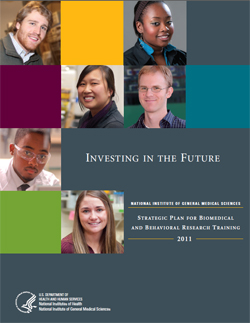Here are answers to some of the questions we’re frequently asked about grant application assignments.
Who receives applications and makes assignments?
All applications are received by the Division of Receipt and Referral (DRR) in the Center for Scientific Review (CSR). The DRR gives each application two assignments, one for review and one for funding consideration.
How are review assignments made?
Referral officers in CSR assign an application to an integrated review group (IRG), a branch of CSR that manages the review of applications in a general scientific area. The chief of the IRG or his/her representative, in consultation with scientific review officers (SROs) in the IRG, makes the final assignment to a specific scientific review group (SRG), which can be a standing study section (SS) or a special emphasis panel (SEP). An SS reviews applications in a specific topic area within the purview of the IRG. A SEP reviews applications on special topics or when conflicts of interest exist. Find an IRG, SS or SEP.
Why isn’t the study section listed on my application?
Since the application is first assigned to an IRG, the IRG abbreviation initially appears as the review assignment. This abbreviation is replaced by the SRG label once that assignment has been made. A similar process occurs with applications assigned to an NIH institute or center (IC) for review. At NIGMS, the initial assignment is to our Office of Scientific Review, followed by assignment to a specific review group and SRO.
How are assignments for funding consideration made?
The DRR assigns the application to an IC for funding consideration. In some cases, the DRR may make a secondary assignment to another IC. The assignment is based on referral guidelines developed by each IC. These describe the IC’s focus and mission areas, interests shared with other ICs, and the funding opportunity announcements that the IC supports. Other considerations may include requests made by investigators or by ICs for secondary assignments.
Why wasn’t my application assigned to the person I thought was my program director?
It’s likely that your application received a “temporary” assignment. When an IC receives an application, it assigns a temporary program director. At NIGMS, this person is Ann Hagan, our associate director for extramural activities. Once the application has been matched with the most appropriate NIGMS division, branch and program director, it will receive a final assignment.
Why was my application assigned to an IC or SS that I didn’t request?
If you have traditionally been funded by one IC and request a change to another IC, reassignment will occur only if the application is deemed a better fit with the new IC. Another factor is the IC’s program interests, as described in its referral guidelines, program announcements (PAs) and requests for applications (RFAs). Many of these announcements are only supported by one or a subset of ICs. If an application is submitted in response to a funding opportunity announcement that is not supported by the requested IC, then it can’t be assigned to that IC.
Several factors influence the likelihood that a request for review assignment to a particular SS will be honored. The most important factor is whether the proposed research is a good fit for the scientific focus of the requested SS. Like science itself, the scientific focus of an SS evolves over time. Therefore, the SS that reviewed your application 4 years ago may no longer be suitable, and the IRG may make a different assignment. The funding opportunity announcement can also play a role in the review assignment. Applications for many RFAs and PAs with special receipt, referral and/or review considerations are reviewed by SEPs organized by CSR or by IC-specific scientific review offices. If the application is responding to one of these funding opportunity announcements, it can’t be assigned to a standing SS for review.
What should I do if I don’t get a requested study section or IC assignment?
You should contact the SRO or program director who was assigned the application. If, after discussion, a reassignment is warranted, that person will facilitate the change. If you still have concerns, you should contact the DRR.
For more details on this topic, read the CSR’s The Assignment Process.


 Many of the themes in our strategic plan for research training have been echoed by the Biomedical Workforce Working Group of the Advisory Committee to the Director, NIH. Among these is the use of individual development plans (IDPs) to facilitate career development discussions and planning between mentees and mentors. I’m delighted to share some progress on this front.
Many of the themes in our strategic plan for research training have been echoed by the Biomedical Workforce Working Group of the Advisory Committee to the Director, NIH. Among these is the use of individual development plans (IDPs) to facilitate career development discussions and planning between mentees and mentors. I’m delighted to share some progress on this front.